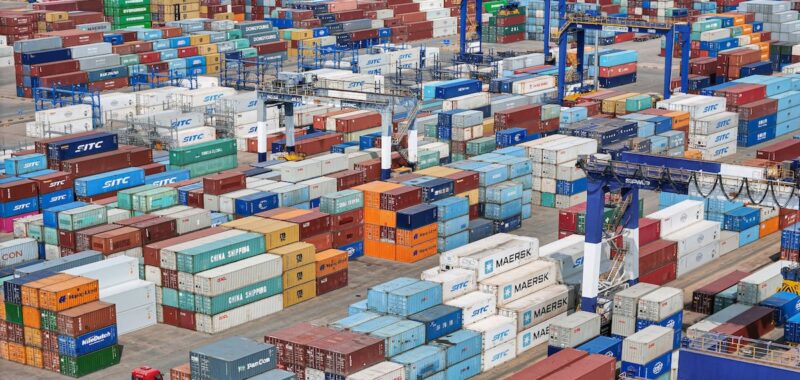
Tariffs are forcing fashion to confront a reality it has refused to face â until now. Not because the system was working, but because the industry was too invested in the illusion that it was. Now, with margins collapsing and inventory costs surging in the wake of sweeping new duties on imports from key fashion manufacturing hubs, that illusion has been shattered. But this isnât just a crisis. Itâs an opportunity to rebuild fashion on new terms: intelligent, resilient and real.
This isnât the first shock to hit fashion. But unlike whispers of climate risk or abstract ESG mandates, tariffs hit where it hurts: the P&L. The entire legacy system â long timelines, massive minimums, fragile logistics chains â has been crumbling for years. Now, tariffs are pushing it to the point of collapse.
Still think the system works?
Inventory has long been fashionâs silent killer. The most dangerous cost is the one that hides in plain sight: unsold products, overproduction, unnecessary freight, markdowns, and returns. What weâve tolerated as normal â building product in advance, praying it sells â has always been a structural flaw. Tariffs have simply made the cost of that flaw impossible to ignore.
But the damage goes deeper. Inventory ties up capital that could fund experimentation. It slows brands when speed is everything. It locks creators into cycles that are misaligned with the real world.
And now? That failure is 35 percent more expensive.
After the Shock
So what happens when a system collapses? You donât fix it. You leave it behind and build something new â something fundamentally more adaptive, intelligent and aligned with the reality of todayâs world.
The future of fashion isnât about moving faster in the same direction. Itâs about rearchitecting the direction altogether. We are entering a world in which clothing is made only when it is wanted, where production happens as close to the customer as possible, and where designs live digitally until the moment theyâre needed physically.
This isnât a dream. Itâs what happens when networks replace chains â when decentralised nano-, micro-and macro-factories form an intelligent grid that routes production across the globe with minimal waste and maximal responsiveness. The factories of tomorrow arenât one-size-fits-all. They are specialized, evolving, and context-aware â each one a living node in a creative web.
To manage this complexity, fashion doesnât need more control â it needs more intelligence. This is where artificial intelligence becomes not just useful but indispensable.
AI will become the connective tissue that links demand to immediate production at a global scale, capacity to opportunity, and creator to customer. It embraces dynamic change, facilitates real-time collaboration, and eliminates the guesswork that has defined the industry for far too long.
We are moving into an era where creation is as immediate as inspiration. Where feedback loops between creators and markets collapse from months to moments. Where business models evolve in real time, and new ideas donât have to fight the inertia of old infrastructure.
AI enables not centralisation but synchronisation. It empowers decentralised excellence. And it lets humans focus on what only humans can do: create, connect, and inspire.
A New Logic for a New Industry
What we are witnessing is not a crisis. It is an opportunity for reinvention.
Fashion is shedding the logic of the industrial age â where scale was everything, excess was the default, and control trumped connection. In its place, a new logic is emerging: one built on responsiveness, resilience and real-time relationships.
The brands that thrive next wonât be the biggest, but the most aligned â with their customers, with their partners, and with the world as it is. They will operate with transparency. They will iterate faster than trends can form. They will turn volatility into advantage, and regulation into momentum.
And most importantly, they will stop wasting time, money, materials, people and ideas.
Tariffs didnât just make fashion harder. They made transformation inevitable.
This isnât about reform. This is about replacing. Itâs about building a system that is worthy of the creativity, energy, and individuality that fashion has always claimed to represent â but rarely delivered. A system that is intelligent by design, sustainable by structure, and equitable by default. One where the makers and the wearers can connect freely, without waste or compromise. One where business becomes a catalyst â not a cage.
This is the opportunity tariffs have given us: to finally walk away from the myths of fashion and embrace the future of clothing:personal, expressive, real. Letâs go build it.
Lawrence Lenihan is the executive chairman and co-founder of Resonance, and author of âThe Rise of the Unwasteful Brandâ and âThe End of the Billion Dollar Brand.â
The views expressed in Op-Ed pieces are those of the author and do not necessarily reflect the views of The Business of Fashion.
How to submit an Op-Ed: The Business of Fashion accepts opinion articles on a wide range of topics. The suggested length is 700-1000 words, but submissions of any length within reason will be considered. All submissions must be original and exclusive to BoF. Submissions may be sent to opinion@businessoffashion.com. Please include âOp-Edâ in the subject line and be sure to substantiate all assertions. Given the volume of submissions we receive, we regret that we are unable to respond in the event that an article is not selected for publication.
Disclosure: Lawrence Lenihan is part of a group of investors who, together, hold a minority interest in The Business of Fashion.

